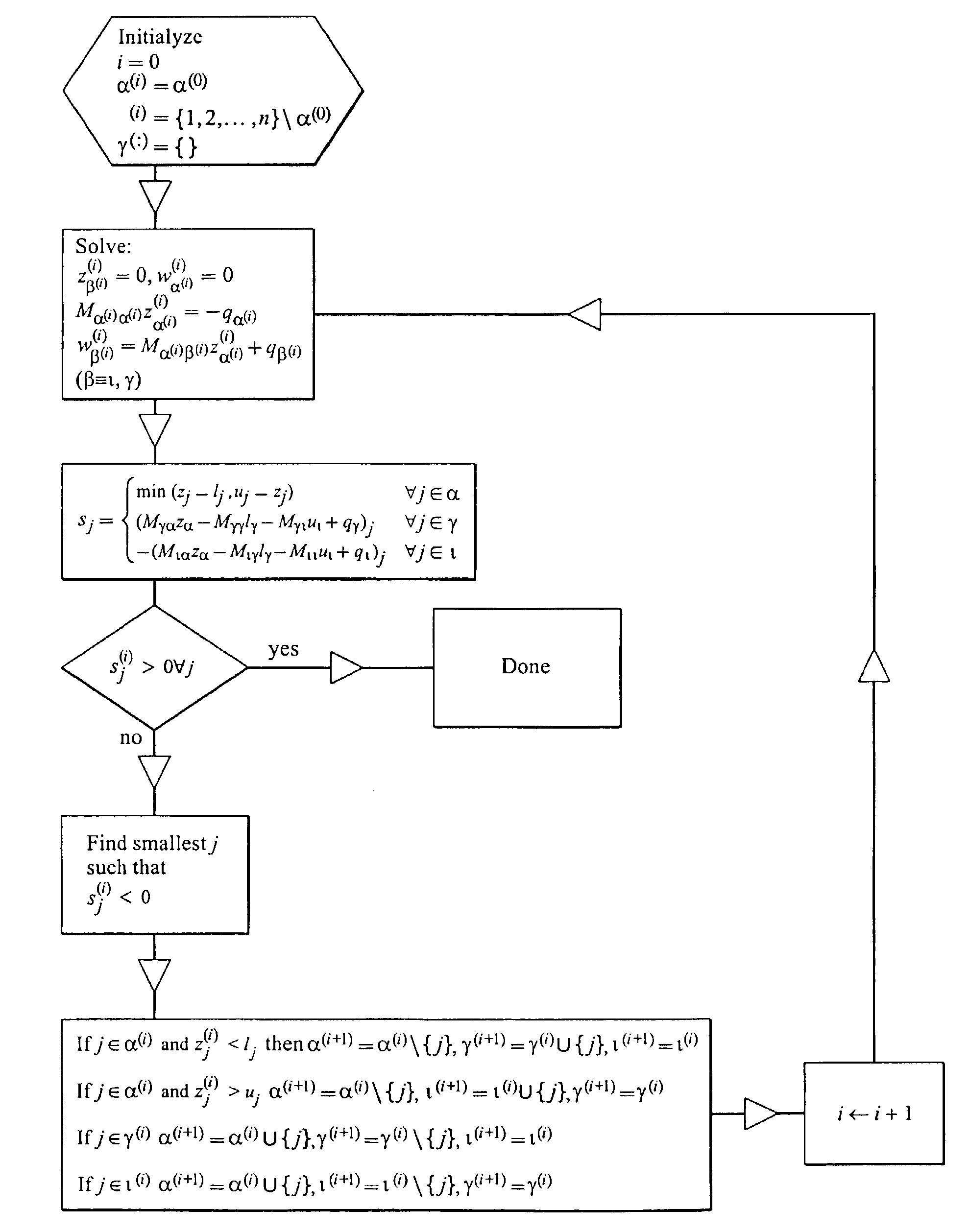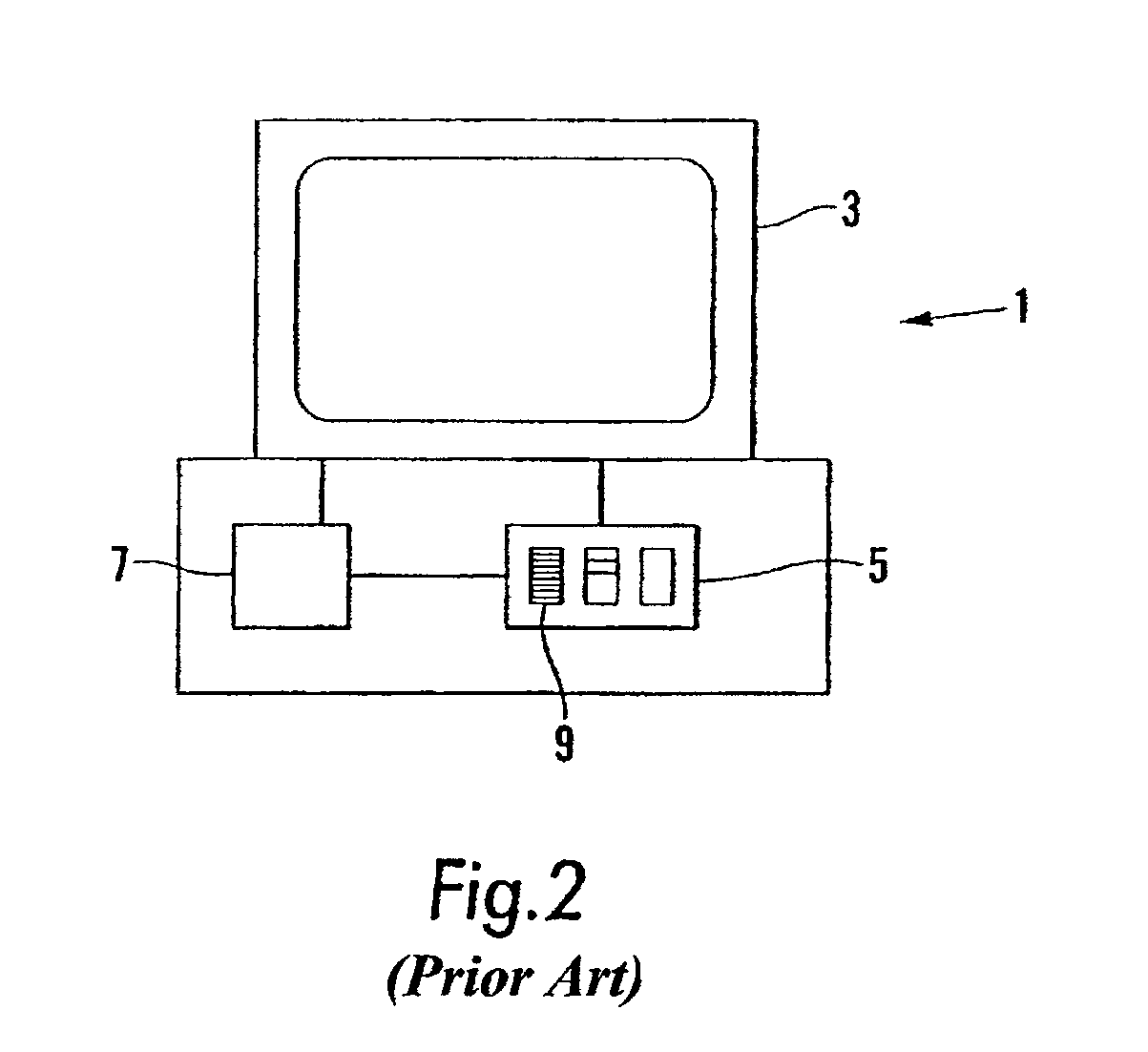Image display apparatus, method and program based on rigid body dynamics
- Summary
- Abstract
- Description
- Claims
- Application Information
AI Technical Summary
Benefits of technology
Problems solved by technology
Method used
Image
Examples
Embodiment Construction
[0059]The implementation of the invention that will be described includes a computer system 1 having a display 3, a memory 5 and a processor. The computer system has software 9 loaded into the computer memory to allow the computer system to display a simulation of the real physical world on the display 3. The display 3 may be a conventional computer display screen, for example an Liquid Crystal Display (LCD) screen or a Cathode Ray Tube (CRT) screen, or the display 3 may be a less conventional display type such as virtual reality goggles or multiple screens of a coin operated video game, of the type installed in public places.
[0060]A physical system which has n rigid bodies is modelled. The ith body has a mass mi, and a position vector p which has s seven coordinates, three to define the position of the rigid body and four being the Euler parameters of the body defining its orientation. Each body also has velocity vector v which has six coordinates, three being the three components ...
PUM
 Login to View More
Login to View More Abstract
Description
Claims
Application Information
 Login to View More
Login to View More - R&D
- Intellectual Property
- Life Sciences
- Materials
- Tech Scout
- Unparalleled Data Quality
- Higher Quality Content
- 60% Fewer Hallucinations
Browse by: Latest US Patents, China's latest patents, Technical Efficacy Thesaurus, Application Domain, Technology Topic, Popular Technical Reports.
© 2025 PatSnap. All rights reserved.Legal|Privacy policy|Modern Slavery Act Transparency Statement|Sitemap|About US| Contact US: help@patsnap.com



